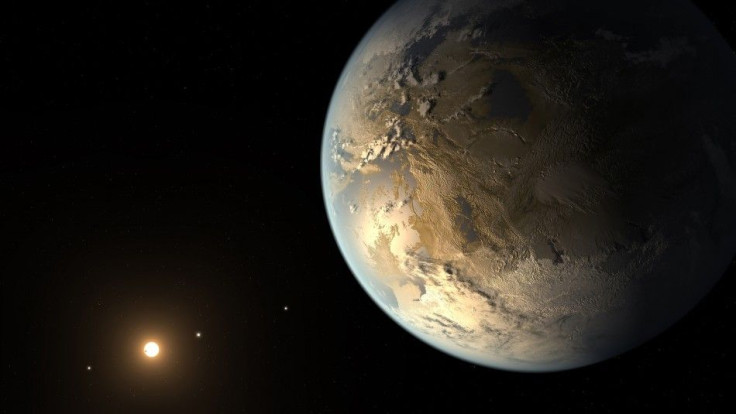Kepler 438b Is 'Most Earth-Like Alien World'

Astronomers, at a meeting of the American Astronomical Society, a society of professional astronomers in Washington DC, said the title of the "most Earth-like alien world" has been given to one of the eight planets that they had been spying on. The alien world has been named Kepler 438b.
According to BBC, out of the eight that were picked by the Kepler space telescope, three of the planets were considered within the habitable zone and are included in the Kepler's hall of fame. Kepler 438b, which is one of the three planets that is considered to be habitable, is said to be rocky and slightly warmer than the Earth.
Kepler 438b is considered to be 12 percent bigger than the Earth. It is said to be closer to Earth's temperature and receives about 40 percent more heat from its sun when compared to the amount of heat that the Earth receives from the sun. Astronomers have said that Kepler 438b is more similar than Kepler 186f, previously considered to be the most likely twin of Earth.
Dr Doug Caldwell from the Search for Extra-Terrestrial Intelligence Institute, a name that is given to a number of activities that have been undertaken to search for extra-terrestrials, said that with the use of measurements from Kepler as well as other measurements, they did not know if the planets had oceans that had fish and continents that had trees. He said that they had information of only the size of the planet and the energy that it received from its star.
According to Caldwell, the planet was a size that it was likely to be rocky and that the energy was comparable to what the Earth was receiving. Caldwell said that if one stands on the surface of the Earth-like alien world, it would be warmer than the Earth. He said that the sky would look redder since the planet was around a cooler red dwarf star.
At a recent event, Professor Debra Fischer from Yale University, said that she remembered of a time, more than two decades ago, before the first exoplanet was discovered. She said that she remembered astronomers being worried before that. She went on to say that they had to step back and say that the Star Trek picture would be wrong and that it filled her with despair.
To contact the writer: afza.kandrikar@gmail.com




















